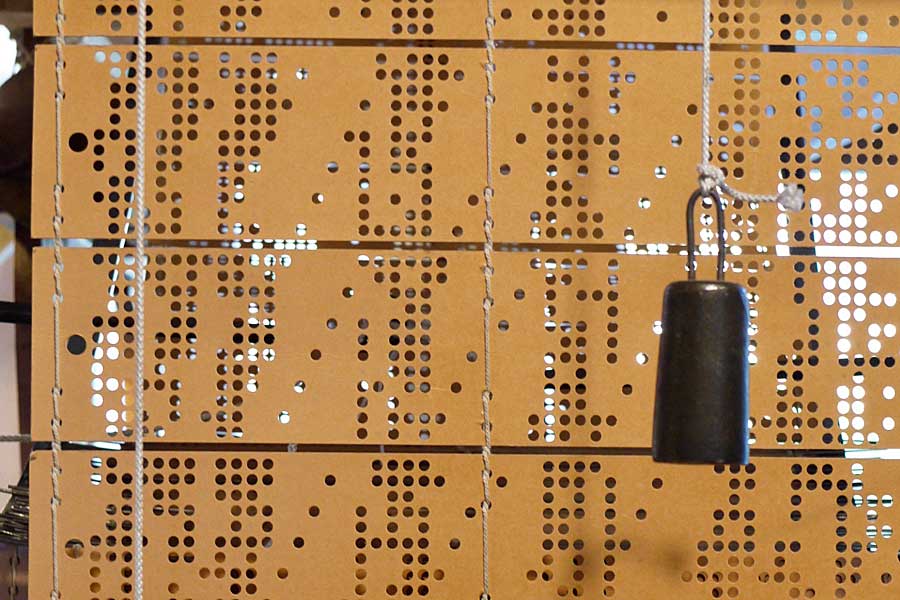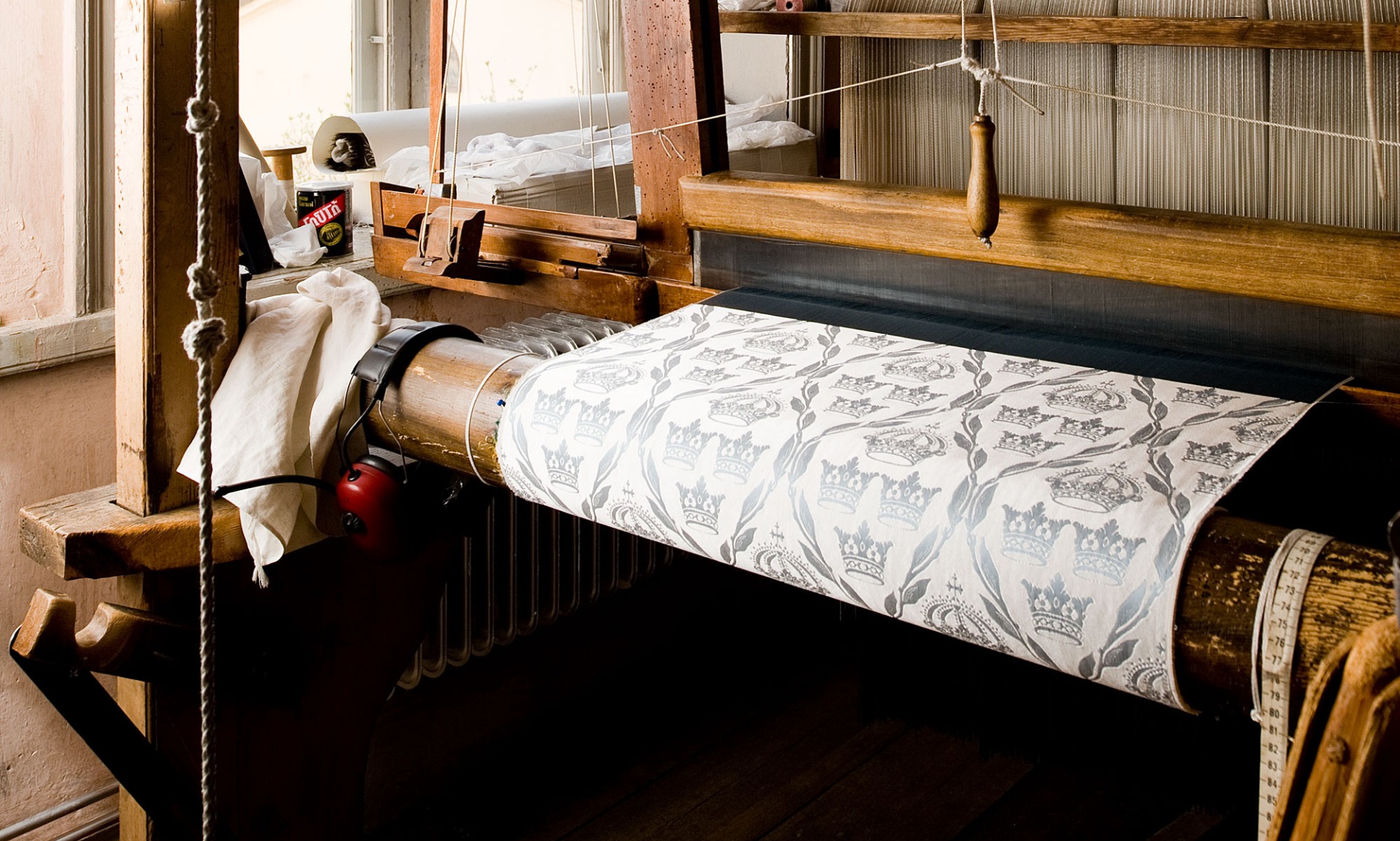The weaving room and weaving
The Weaving Room
The weaving room is currently equipped with four hand looms for the production of patterned silk fabrics and a mechanical loom for the production of silk ribbons. The handlooms are placed in a framework for several looms. On top of the framework is the jacquard mechanism, which uses the punched cards to lift threads in the warp so that patterns are formed (see also Jacquard technology). There are also machines for winding, coiling and making punch cards.
Weaving
Woven fabrics consist of two thread systems, longitudinal warp and transverse weft. To tie the two thread systems together, part of the threads are lifted so that an opening in the warp occurs, this is called a reason. The weft thread is passed through the warp with a shuttle, after which it is struck by the impact bar so that it is added to previous threads that formed a weave. When a new reason is opened, the previous element is bound at the same time. The simplest binding is called tuskaft. For tufts, only two treads are required to make the thread system of warp and weft hold together, what is called binding. For patterns, patterns require many steps that are stepped in a certain order for the pattern to emerge. When there is no room for more treads, another weaving method is needed, such as lifting warp threads by hand. Because that required an extra person.



The Jacquard technique
Jacquard looms are an early form of computer that facilitated the production of patterned fabrics as early as the beginning of the 19th century. With the jacquard mechanism, invented by the Frenchman Joseph Marie Jacquard in 1805, only a single treadle and only one person are needed to produce advanced patterned fabrics.
The pattern is programmed in so-called punched cards. By depressing the pedal, the loom feeds a hole card, and the warp threads are lifted where there are holes. The punch cards are joined together in long chains of hundreds of punch cards which together form a pattern, a so-called pattern report, which can then be repeated.
Punched cards are created by transferring a pattern sketch to millimeter squared paper, a so-called cartridge drawing. Each row of squares on the cartridge drawing represents a feature and thus also a hole card. The holes are punched based on whether a square is filled or not. It is just like the language of computers, which is based on the binary number system of two numbers, 1 and 0, where 1 represents power on and 0 represents power off. With different combinations and sequences of 1s and 0s, a programmer can control what a computer should do.
Jacquard mechanics enraged the skilled French weavers because half of them lost their jobs, those who previously lifted the threads in the warp were no longer needed. But the development could not be stopped and this type of programming spread to other areas. Punch cards programmed the computers until the 1970s when digital systems gradually took over.

